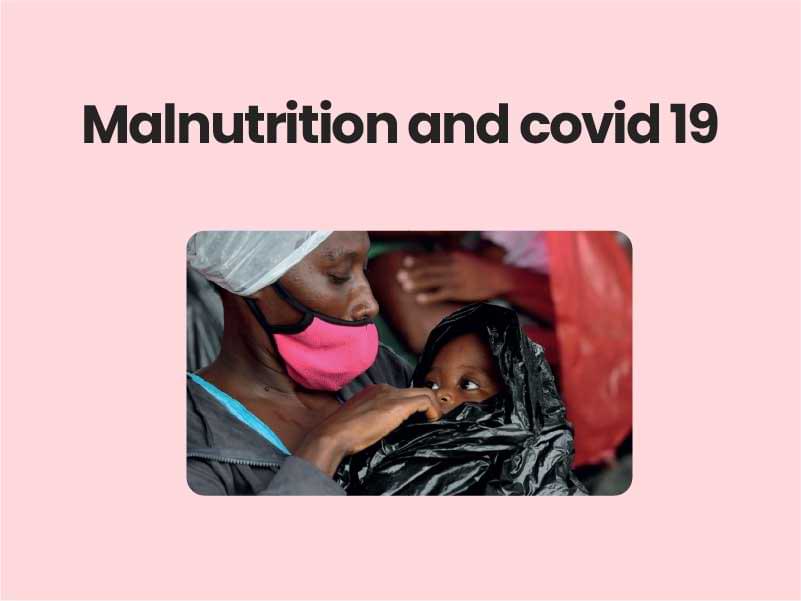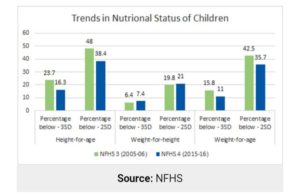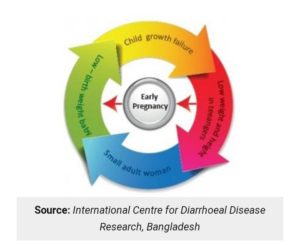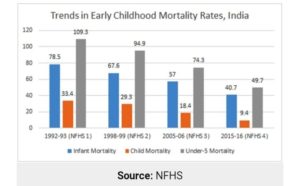Companion@360 → 7 Month programme to sharpen your writing skills → REGISTER NOW

Malnutrition and covid 19
A robust and diverse food supply is an essential part of the health and nutrition response to COVID-19. WHO, together with partners, is providing nutrition and food safety guidance and advice during the COVID-19 pandemic for governments, food businesses, health workers, and the general public, to maintain good health and prevent malnutrition in all its forms. Women, infants, children, and adolescents are at particular risk of malnutrition. Optimizing nutrition early in life—including the 1000 days from conception to a child’s second birthday—ensures the best possible start in life, with long-term benefits.
Key facts
- Malnutrition, in all its forms, includes undernutrition (wasting, stunting, underweight), inadequate vitamins or minerals, overweight, obesity, and resulting diet-related non-communicable diseases.
- 1.9 billion adults are overweight or obese, while 462 million are underweight.
- 47 million children under 5 years of age are wasted, 14.3 million are severely wasted and 144 million are stunted, while 38.3 million are overweight or obese.
- Around 45% of deaths among children under 5 years of age are linked to undernutrition. These mostly occur in low- and middle-income countries. At the same time, in these same countries, rates of childhood overweight and obesity are rising.
- The developmental, economic, social, and medical impacts of the global burden of malnutrition are serious and lasting, for individuals and their families, for communities and for countries.
Causes of Malnutrition:
- Inadequate Dietary Intake
- The state of the World’s Children Report 2019 by UNICEF reckons that 69 percent of deaths among children under five years of age can be attributed to malnutrition in India
- Food & nutrition insecurity
- Inequity
- Less food and less nutritious food.
Covid 19 and Malnutrition:
- The nationwide lockdown has disrupted access to essential services.
- The mid-day meal program, which served as the primary source of supplementary nutrition for millions of school-going children in India suffered, had to be put on hold as schools were closed and states have imposed restrictions on the congregation of more than five persons.
Malnutrition and India:
- As per the report of the Comprehensive National Nutrition Survey (CNNS) conducted by UNICEF during 2016-18, the prevalence of severe acute malnutrition among children is 4.9%, which indicates further reduction when compared to the levels reported by NFHS-4 as 7.4%.
- As per the report of NFHS-4 conducted in 2015-16, 38.4% of children under 5 years of age are stunted indicating a reduction and information from the previous NFHS – 3 conducted in 2005-06, which reported 48% children under 5 years of age as stunted and hence there is an improvement from the previous status.
- As per the Comprehensive National Nutrition Survey (CNNS) conducted by the Ministry of Health & Family Welfare, the rate of stunting among children has further reduced to 34.7%.
- Global Hunger Index-2019: India ranks 102 out of 117 countries in the Global Hunger Index 2019
- Global Nutrition Report-2020: As per the Global Nutrition Report 2020, India is among 88 countries that are likely to miss global nutrition targets by 2025.
- FAO estimates: The Food and Agriculture Organization (FAO) estimates that 194.4 million people in India (about 14.5% of the total population) are undernourished.
Government Initiatives:
- POSHAN Abhiyaan.
- PradhanMantriMatruVandanaYojana
- Anganwadi Services
- Scheme for Adolescent Girls under the Umbrella Integrated Child Development Services Scheme (ICDS)
We need to develop long-term sustainable strategies to address the challenges facing the health and agri-food sectors. Priority should be given to addressing underlying food security and malnutrition challenges.



